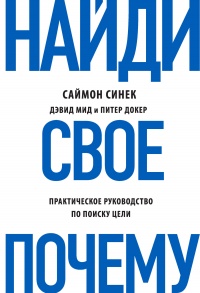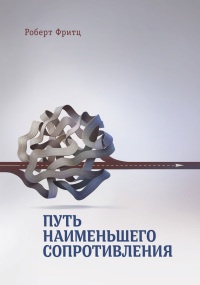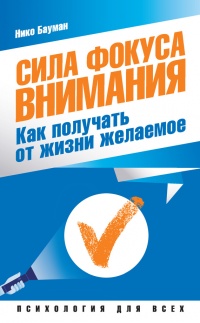Ознакомительная версия. Доступно 19 страниц из 93
Lombardi, V. C., Ruscetti, F. W., Gupta, J. D., Pfost, M. A., Hagen, K. S., Peterson, D. L., Ruscetti, S. K., Bagni, R. K., Petrow-Sadowski, C., Gold, B., Dean, M., Silverman, R. H., and Mikovits, J. A. (2009). Detection of an Infectious Retrovirus, XMRV, in Blood Cells of Patients with Chronic Fatigue Syndrome. Science, 326(5952): 585–589.
Lopes, L. (1993). Two conceptions of the juror. In R. Hastie (ed.), Inside the Juror: The Psychology of Juror Decision Making, pp. 255–262. Cambridge University Press, Cambridge.
Machamer, P., Darden, L., and Craver, C. F. (2000). Thinking about Mechanisms. Philosophy of Science, 67(1): 1–25.
Mackie, J. L. (1974). The Cement of the Universe. Clarendon Press, Oxford.
Macklin, R. (1999). The Ethical Problems with Sham Surgery in Clinical Research. The New England Journal of Medicine, 341(13): 992–996.
Malle, B. F., Guglielmo, S., and Monroe, A. E. (2014). A Theory of Blame. Psychological Inquiry: An International Journal for the Advancement of Psychological Theory, 25(2): 147–186.
Mandel, D. R. (2003). Judgment Dissociation Theory: An Analysis of Differences in Causal, Counterfactual, and Covariational Reasoning. Journal of Experimental Psychology: General, 132(3): 419–434.
March, L., Irwig, L., Schwarz, J., Simpson, J., Chock, C., and Brooks, P. (1994). n of 1 trials comparing a non-steroidal anti-inflammatory drug with paracetamol in osteoarthritis. BMJ, 309(6961): 1041–1045.
Matossian, M. A. K. (1989). Poisons of the Past: Molds, Epidemics, and History. Yale University Press, New Haven, CT.
Matthews, R. (2000). Storks Deliver Babies (p=0.008). Teaching Statistics, 22(2): 36–38.
Maurage, P., Heeren, A., and Pesenti, M. (2013). Does Chocolate Consumption Really Boost Nobel Award Chances? The Peril of Over-Interpreting Correlations in Health Studies. The Journal of Nutrition, 143(6): 931–933.
McLean, K. A., Byanaku, A., Kubikonse, A., Tshowe, V., Katensi, S., and Lehman, A. G. (2014). Fishing with bed nets on Lake Tanganyika: A randomized survey. Malaria Journal, 13: 395.
McLean, R. D. and Pontiff, J. (2015). Does Academic Research Destroy Stock Return Predictability? Journal of Finance, forthcoming. Retrieved from http://ssrn.com/abstract=2156623.
Meadow, R. (2002). A case of murder and the BMJ. BMJ, 324(7328): 41–43.
Meek, C. (1995). Strong completeness and faithfulness in Bayesian networks. In Proceedings of the Eleventh Conference on Uncertainty in Artificial Intelligence.
Meeks, R. R. (2004). Unintentionally Biasing the Data: Reply to Knobe. Journal of Theoretical and Philosophical Psychology, 24(2): 220–223.
Messerli, F. H. (2012). Chocolate Consumption, Cognitive Function, and Nobel Laureates. The New England Journal of Medicine, 367(16): 1562–1564.
Michotte, A. (1946). La Perception de la Causalité. Editions de l’Institut Supйrieur de Philosophie, Louvain. English translation by T. Miles & E. Miles. The Perception of Causality, Basic Books, 1963. Citations refer to the translated edition.
Mill, J. S. (1843). A System of Logic. Parker, London. Reprint, Lincoln-Rembrandt Pub., 1986.
Miller, J. G. (1984). Culture and the Development of Everyday Social Explanation. Journal of Personality and Social Psychology, 46(5): 961–978.
Mitofsky, W. J. (1998). Review: Was 1996 a Worse Year for Polls Than 1948? The Public Opinion Quarterly, 62(2): 230–249.
Mitsumoto, H., Brooks, B. R., and Silani, V. (2014). Clinical trials in amyotrophic lateral sclerosis: Why so many negative trials and how can trials be improved? The Lancet Neurology, 13(11): 1127–1138.
Moher, D., Schulz, K. F., and Altman, D. G. (2001). The CONSORT statement: Revised recommendations for improving the quality of reports of parallel-group randomised trials. The Lancet, 357(9263): 1191–1194.
Morris, M. W. and Peng, K. (1994). Culture and Cause: American and Chinese Attributions for Social and Physical Events. Journal of Personality and Social Psychology, 67(6): 949–971.
Mosca, L., Manson, J. E., Sutherland, S. E., Langer, R. D., Manolio, T., and Barrett-Connor, E. (1997). Cardiovascular disease in women: A statement for healthcare professionals from the American Heart Association. Writing Group. Circulation, 96(7): 2468–2482.
Mostofsky, E., Rice, M. S., Levitan, E. B., and Mittleman, M. A. (2012). Habitual Coffee Consumption and Risk of Heart Failure: A Dose-Response Meta-Analysis. Circulation: Heart Failure, 5(4): 401–405.
Mott, N. L. (2003). The Current Debate on Juror Questions: To Ask or Not to Ask, That Is the Question. Chicago-Kent Law Review, 78: 1099.
Muntner, P., Safford, M. M., Cushman, M., and Howard, G. (2014). Comment on the Reports of Over-estimation of ASCVD Risk Using the 2013 AHA/ACC Risk Equation. Circulation, 129(2): 266–267.
Murphy, K. (2002). Dynamic Bayesian Networks: Representation, Inference and Learning. PhD thesis, University of California, Berkley.
Nadelhoffer, T. (2004). On Praise, Side Effects, and Folk Ascriptions of Intentionality. Journal of Theoretical and Philosophical Psychology, 24(2): 196–213.
Narayanan, A. and Shmatikov, V. (2008). Robust Deanonymization of Large Sparse Datasets. In Proceedings of the IEEE Symposium on Security and Privacy.
Newburger, J. W., Takahashi, M., Gerber, M. A., Gewitz, M. H., Tani, L. Y., Burns, J. C., Shulman, S. T., Bolger, A. F., Ferrieri, P., Baltimore, R. S., Wilson, W. R., Baddour, L. M., Levison, M. E., Pallasch, T. J., Falace, D. A., and Taubert, K. A. (2004). Diagnosis, Treatment, and Long-Term Management of Kawasaki Disease. Circulation, 110(17): 2747–2771.
Nieman, D. C. (1994). Exercise, Infection, and Immunity. International Journal of Sports Medicine, 15(S 3):S131–S141.
Norenzayan, A. and Schwarz, N. (1999). Telling what they want to know: Participants tailor causal attributions to researchers’ interests. European Journal of Social Psychology, 29(8): 1011–1020.
Normore, A. H. and Ilon, L. (2006). Cost-Effective School Inputs: Is Class Size Reduction the Best Educational Expenditure for Florida? Educational Policy, 20(2): 429–454.
Noseworthy, J. H., Ebers, G. C., Vandervoort, M. K., Farquhar, R. E., Yetisir, E., and Roberts, R. (1994). The impact of blinding on the results of a randomized, placebo-controlled multiple sclerosis clinical trial. Neurology, 44(1): 16–20.
Novick, L. R. and Cheng, P. W. (2004). Assessing Interactive Causal Influence. Psychological Review, 111(2): 455–485.
Ознакомительная версия. Доступно 19 страниц из 93
























